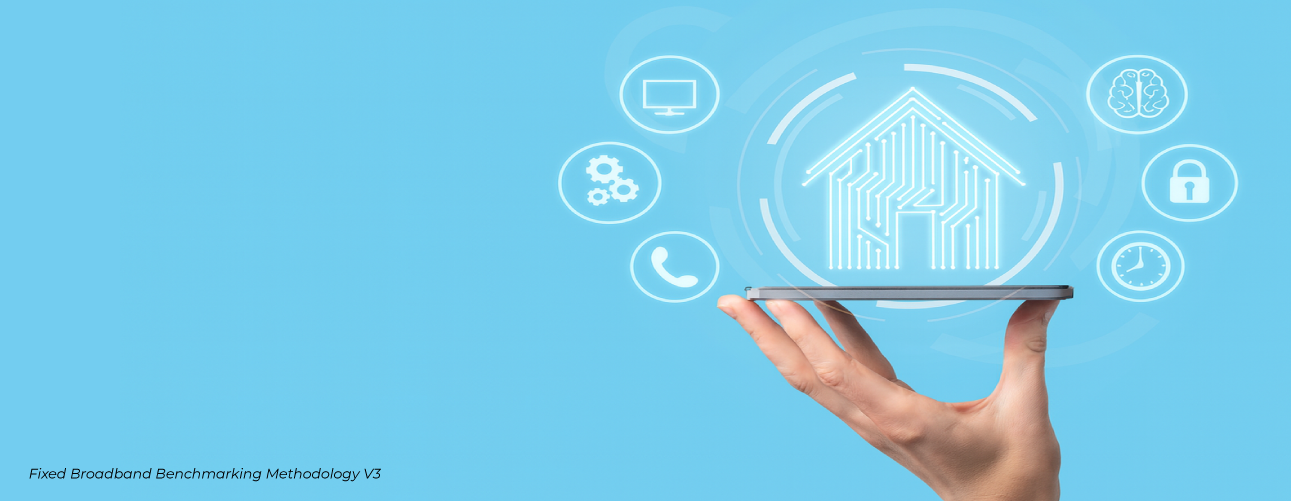FTTH: The future-proof technology to ensure QoE

During the COVID-19 pandemic, all of us have become more aware of how the telecommunication industry has contributed to the economy development and has ensured Customer Experience. First of all, we experienced first-hand how broadband plays a key role in the economy all over the world while keeping businesses, governments and communities connected and running. Secondly, we realized the importance of a robust in-home network performance for customer satisfaction. Now, digital consumers are more demanding, and they are beginning to value attributes, such as reliability and Wi-Fi excellence, over speed or high capacity.
ITU Secretary-General/Vice-Chair, Houlin Zhao, stated during the Ultra-Broadband Forum (UBBF) that "as a critical national infrastructure, ultra-broadband networks accelerate the digital transformation of industries and improve productivity, which is key to building national competitiveness and sustainable development".
At MedUX, we thank Huawei and OMDIA for mentioning MedUX HOME metrics on the importance of fiber to Quality of Experience.
UBBF, a large-scale industry event held by the Commission of the UN on broadband communication together with Huawei company, gave to the leading players of the industry an opportunity for joint cooperation with the purpose of creation of a steady ecosystem for the industry of ultrabroadband communication.
Watch the “Moving Towards the Era of Intelligent Connectivity” keynote now. #UBBF2020 #Huawei
As stated in Omdia’s Benchmark Global Fibre Development Index Analysis 2020, when other basic performance indicators are considered, MedUX data suggests that fibre services (in particular FTTH services) are better positioned to meet the most demanding users’ requirements. In this regard, fibre investment is instrumental to provide an optimized and future-proof Quality of Experience (QoE).
Figure 1: Fibre networks provide a truly high-end experience

“In an era where people and homes are the focus, connectivity is the main goal” states David Wang, Executive Director of Huawei’s Board, in the document Intelligent Connectivity, New Value Together that Huawei Technologies have prepared for the Ultra Broadband Forum 2020 (UBBF). Regarding network access technologies, this report also points out the role of fibre, that “will be necessary for achieving the Digital Inclusion and Global Digital Connectivity imperatives”, as users demand higher connection speeds over time.
Figure 2: Average broadband speeds worldwide (2016-2024)

Huawei includes Omdia’s Fibre Development Index that aims to capture all elements of fibre investment, specifically fibre access, mobile fibre backhauls and Quality of Service (QoS). “Due to the importance of fibre investment and its impact on global development, Omdia has created a new benchmark”, says Michael Philpott, Research Director, Service Provider Consumer at OMDIA.
On this study, OMDIA says that optical fibre is not the only broadband technology capable of delivering ultra-high-speed services. Cable and 5G-FWA technologies for example are both capable of delivering gigabit broadband speeds. However, optical fibre’s limitless and fully symmetrical speeds, and high reliability make it a truly future-proof technology.
In the scope of the Ultra Broadband Forum 2020 event, Evan Kirchheimer, Vice President, Service Providier and Communications Researcher at Omdia, presented in Moving Towards the Era of Intelligent Connectivity Huawei’s keynote the emerging trends on fibre access and the inevitable shift to Quality of Experience over speed, among others.
“Our surveys’ insights reveal that digital consumers are beginning to value other aspects, that are part of what we call Quality of Experience (QoE): reliability, great customer service, good Wi-Fi experience in every room, fast broadband speed and an easy and quick set-up”, explains Kirchheimer. “The use of fibre is increasing KPIs, and therefore it is leading to a better QoE, not just in terms of download speed or upload speed, but also in terms of reducing latency and jitter”, he states (play video).
Figure 3: Emerging trends in fiber access

MedUX broadband benchmarking looks at much more than headline download speed, including other network and service experience KPIs, including streaming, cloud storage, web browsing and gaming, among many others. Do not hesitate to have a look to our first research about fixed residential broadband, MedUX Report: State of fixed broadband in Europe, based on intensive in-home performance measurements in European countries (2019).
If you find yourself interested, we would love to talk about how we can support your customer experience and customer satisfaction strategy! Request our demo and find out how we can help you gain network and service performance visibility in real-time with customer-like validation and insights.

Explore the Latest from MedUX

Fixed Broadband QoE Benchmarking Spain October 2025
Orange achieves the highest Quality of Experience rating in Spain with its Fiber network
Join the Quality of Experience (QoE) Revolution in Fixed Broadband and discover how Spain’s leading networks perform. Have you ever wondered which operator delivers the…

Assessing User QoE with MedUX's Fixed Broadband Benchmarking Methodology
MedUX’s fixed broadband Quality of Experience (QoE) benchmarking methodology offers a customizable and dependable framework for evaluating customer experience. This methodology employs a distinctive scoring system that integrates both technical and user-focused parameters and adheres to…

BT Tops Fixed Broadband Quality of Experience in the UK and Across Europe
Join the Quality of Experience (QoE) Revolution in Fixed Broadband and explore the United Kingdom’s network performance. Have you ever wondered which operator offers the best Fixed Broadband Experience in the UK and how it compares to other European peers, and most importantly WHY?
MedUX's…
